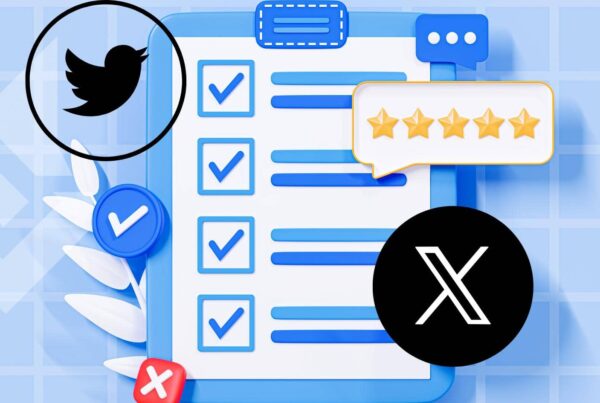Setting clear social media goals is essential for businesses looking to make an impact online. Without specific goals, it’s easy to waste time and resources on content that doesn’t drive meaningful results. But with the right approach, social media can become a powerful tool to grow your brand, engage with your audience, and achieve measurable outcomes. So, what are social goals you can set? Let’s dive into why they matter, examples of effective goals, and practical tips for setting and achieving them.
Why Social Goals Are Important
Social goals provide a roadmap for your social media strategy. They define what success looks like and create a measurable framework to track your progress. Without them, your social media efforts may lack focus and fail to deliver meaningful results.
According to a report by Sprout Social, 77% of marketers say their social media strategy is more effective when it aligns with specific goals. This alignment ensures your content and campaigns directly support your broader business objectives, whether you want to increase brand awareness, generate leads, or build customer loyalty.
When done right, social goals not only make your efforts more targeted but also help you prioritize time and resources. Instead of chasing vanity metrics like likes or follows, goals encourage you to focus on meaningful achievements, such as boosting engagement, driving traffic, or increasing conversions.

Types of Social Media Goals
Socials goals vary depending on your business, audience, and platform. Below are key categories to consider, along with actionable examples:
1. Awareness Goals
These goals focus on making your brand more visible and expanding your audience reach.
- Increase your follower count by 15% over the next three months.
- Achieve 100,000 impressions for a specific campaign in one quarter.
- Grow brand mentions on social platforms by 20% within six months.
2. Engagement Goals
Engagement is about building meaningful interactions with your audience.
- Boost your average post engagement rate from 5% to 8% over the next quarter.
- Double the number of comments on your Instagram posts within three months.
- Achieve 1,000 shares for a specific post or campaign.
3. Traffic Goals
These goals aim to drive visitors to your website, landing pages, or app.
- Increase social media referral traffic to your website by 25% over six months.
- Achieve a 12% click-through rate (CTR) on your Facebook ads.
- Generate 500 unique visits to your product page from Instagram bio links in one month.
4. Conversion Goals
Conversion goals focus on turning followers into leads or customers.
- Capture 200 new leads through a LinkedIn ad campaign within two months.
- Increase e-commerce sales by $10,000 through Instagram Shopping within one quarter.
- Generate 100 sign-ups for a webinar promoted on Facebook.
5. Community Building Goals
Building a loyal community creates long-term value for your brand.
- Grow your Facebook Group to 2,000 members in six months.
- Encourage users to create 100 pieces of content using your branded hashtag in one quarter.
- Increase activity in your online forum by 30% within three months.
Each goal should be tied to a specific metric to ensure you can measure success accurately.

How to Set Effective Social Goals
Setting social goals isn’t just about knowing what you want; it’s about making sure your goals are actionable, realistic, and measurable. This is where the SMART framework comes into play:
- Specific: Define exactly what you want to achieve. For example, instead of “get more followers,” set a goal like “gain 1,000 new followers on Instagram in three months.”
- Measurable: Use data to track progress. Metrics like reach, clicks, conversions, or engagement rates make it easier to measure success.
- Achievable: Be realistic based on your team size, resources, and current performance. For instance, aiming for a 10% growth in engagement is often more practical than 50%.
- Relevant: Align your social goals with overall business priorities. For example, if your company’s goal is to increase online sales, a relevant social goal might be to drive 500 clicks to product pages monthly.
- Time-bound: Set deadlines to create urgency and focus. A timeline like “by the end of the next quarter” helps maintain accountability.
For instance, a social goal for a travel agency might be: “Drive 1,000 clicks to our new tour package page via Facebook ads within two months.”
Common Mistakes to Avoid
When setting and pursuing social goals, be mindful of these common mistakes:
- Setting Vague Goals: Goals like “get more likes” or “increase followers” lack clarity. Instead, specify numbers, percentages, or other measurable outcomes.
- Ignoring Data: Decisions based on guesswork often lead to wasted efforts. Use analytics to guide your goal-setting and strategy.
- Focusing on Vanity Metrics: Metrics like likes and follows don’t always translate into meaningful results. Prioritize goals tied to engagement, traffic, or conversions.
Tools to Track Social Goals
Tracking your social goals is critical to ensuring your efforts are effective. Several tools can help you measure progress and refine your strategy:
- Built-in Analytics Tools: Platforms like Facebook Insights, Instagram Insights, and Twitter Analytics offer detailed data on impressions, reach, engagement, and audience demographics.
- Google Analytics: Use UTM codes to track traffic and conversions from social campaigns on your website.
- Third-Party Tools: Tools like Social Pilot allow you to manage multiple platforms and generate comprehensive reports.

HubSpot reports that marketers who track their goals are 397% more likely to achieve success, underscoring the value of regular monitoring and adjustments.
Examples of Successful Social Goals in Action
Here are a few real-world scenarios to illustrate what are social goals you can set and how businesses can achieve them:
- A Boutique Clothing Store: The business aimed to drive 500 clicks per month to its website from Instagram. By posting engaging content, using strategic hashtags, and optimizing their bio link, they reached 700 clicks in just two months.
- A Coffee Shop: To foster community engagement, the shop launched a branded hashtag campaign encouraging customers to share photos of their drinks. Their goal was to generate 100 user-generated posts in three months, and they achieved it by offering small discounts for participating customers.
- A Home Inspection Company: The business aimed to increase website traffic by driving 300 clicks per month from Facebook ads promoting their pre-purchase inspection services. By sharing engaging posts with before-and-after inspection visuals, using geo-targeted ad campaigns, and including clear calls-to-action, they exceeded their goal, reaching 450 clicks within two months.
Conclusion
So, what are social goals you can set? They are the specific, measurable objectives that guide your social media strategy and help you achieve tangible business results. Whether you’re focused on building brand awareness, increasing engagement, driving traffic, or boosting conversions, clear social goals provide the direction and accountability needed for success.
Start by identifying one or two priorities, using tools to track your progress, and refining your approach as you learn what works best for your audience. Need help setting and achieving impactful social goals? Reach out to our team for expert guidance. Together, we’ll ensure your social media efforts deliver real results!




